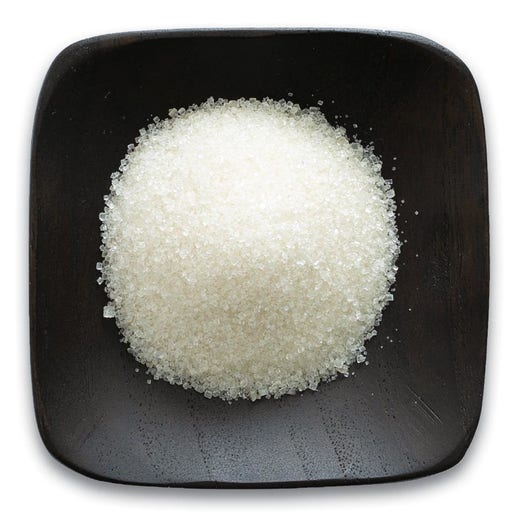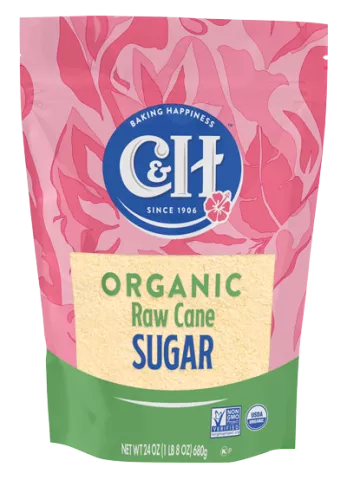Cane Sugar Processing Explained: What Happens Inside a Sugar Mill
Cane Sugar Processing Explained: What Happens Inside a Sugar Mill
Blog Article
A Thorough Overview to the Ecological Impact and Sustainability Practices in Cane Sugar Processing
The environmental impact of walking cane sugar handling provides a complicated range of challenges that warrant mindful exam. From dirt degradation and excessive water use to the carbon impact connected with cultivation and production, the effects of typical techniques are significant. What specific techniques can be executed to strike an equilibrium in between performance and ecological stewardship?
Overview of Cane Sugar Handling
Cane sugar processing includes a series of methodical steps that change sugarcane into polished sugar. At first, collected sugarcane is transferred to refining centers, where it undertakes cleaning to remove soil and debris. Following this, the walking stick is squashed to remove juice, which is then clarified by eliminating impurities with home heating and the enhancement of lime.
The cleared up juice undertakes evaporation, where water is removed to focus the sugar web content. This concentrated syrup is then taken shape via cooling, permitting sugar crystals to create. These crystals are separated from the staying syrup making use of centrifugation, resulting in raw sugar. To accomplish polished sugar, the raw product goes through more purification processes, which may consist of cleaning and filtering to eliminate staying impurities and shade.
The last product is then dried out and packaged for circulation. Throughout this entire process, keeping efficiency and quality assurance is necessary to guarantee the sugar fulfills industry standards. Each action in cane sugar processing not just adds to the end product however additionally has ramifications for resource usage and waste generation, establishing the phase for conversations on sustainability and ecological influences related to sugar manufacturing.
Environmental Difficulties of Production
The production of cane sugar presents several significant environmental challenges that warrant focus. One key concern is the extensive use agrochemicals, including chemicals and plant foods, which can lead to dirt deterioration, biodiversity loss, and contamination of regional water sources. The overflow from sugarcane areas frequently carries these chemicals right into close-by ecological communities, interrupting aquatic life and affecting the health of neighborhoods reliant on these water bodies.
One more difficulty is the high energy intake connected with sugarcane processing. The boiling and refining phases call for considerable warmth, mainly generated by burning fossil fuels, adding to greenhouse gas emissions. Additionally, the large acreage needed for sugarcane cultivation can lead to deforestation and environment destruction, further aggravating environment change and harmful wild animals.
In addition, the labor techniques in some areas raise honest issues, as employees may encounter inadequate working problems and inadequate earnings. This scenario typically bolsters a cycle of poverty in regional communities. Cane Sugar Processing. Resolving these environmental obstacles is essential for creating more sustainable techniques in cane sugar production, inevitably benefiting both the atmosphere and the neighborhoods involved in this market
Water and Land Usage Impact
Water resources and land application are vital parts in the cane sugar market that significantly affect the setting. The cultivation of sugarcane needs significant water input, with quotes recommending that it can consume as much as 2,000 litres of water per kg of sugar produced. This extensive usage of water typically results in deficiency of neighborhood water resources, influencing not only the navigate to these guys sugarcane plantations however also bordering ecological communities and communities that rely upon the same water resources for farming and residential usage.

Moreover, land use for sugarcane farming can cause deforestation and the conversion of all-natural habitats right into monoculture haciendas. This technique decreases biodiversity, interrupts local ecological communities, and adds to soil deterioration. The growth of sugarcane areas commonly elbows in on beneficial agricultural land, developing competition for sources in between food and biofuel manufacturing.
Sustainable practices, such as optimizing watering techniques and applying plant rotation, are necessary to reduce these influences. By embracing much more effective water use and land management methods, the cane sugar market can minimize its environmental impact, guaranteeing an equilibrium between agricultural performance and ecological conservation.
Greenhouse Gas Emissions
Greenhouse gas emissions stand for a substantial ecological concern within the cane sugar processing industry, especially as agricultural methods broaden to satisfy worldwide demand. The farming of sugarcane, a plant that prospers in exotic environments, counts greatly on artificial plant foods and chemicals, which add to laughing gas exhausts. Additionally, land-use changes, including deforestation for brand-new sugarcane haciendas, launch co2 saved in plants and dirt.
During processing, energy intake is one more major resource of greenhouse gas discharges - Cane Sugar Processing. Numerous sugar mills make use of nonrenewable fuel sources to power machinery and create warm, resulting in substantial carbon impacts. Additionally, the transport of raw sugarcane and completed products includes layers of emissions via fuel combustion in automobiles
This includes evaluating present farming methods, refining techniques, and transportation systems to recognize locations for enhancement and reduction. Attending to greenhouse gas emissions is crucial for promoting an extra sustainable walking cane sugar market in a transforming climate.

Sustainable Practices and Innovations
Lasting methods and innovations are significantly important in the cane sugar processing industry as stakeholders seek to reduce ecological impacts while preserving productivity. One considerable advancement is the application of integrated plant read this post here monitoring, which enhances source use by incorporating soil administration, parasite control, and plant rotation strategies. This method improves yield while minimizing chemical inputs and preserving dirt health and wellness.
Furthermore, the fostering of renewable resource sources, such as biomass from sugarcane residues, has actually acquired grip - Cane Sugar Processing. By converting waste items right into energy, processing facilities can reduce their dependence on fossil gas, thus reducing greenhouse gas exhausts
Water administration practices have likewise seen improvements with the recycling and reusing of water in processing plants, considerably lowering freshwater consumption. Innovations in technology, such as precision agriculture, enable farmers to check plant health and wellness and resource use extra properly, making certain lasting cultivation practices.
Moreover, qualification programs like Fair Profession and Rainforest Partnership urge environmentally accountable farming methods and advertise social equity within the supply chain. By welcoming these sustainable practices and developments, the walking stick sugar handling industry can improve its durability and contribute favorably to ecological stewardship.
Verdict
The ecological influence of walking stick sugar processing presents substantial obstacles, consisting of soil deterioration, high water consumption, and greenhouse gas emissions, along with honest worries associated with labor practices. Dealing with these issues via lasting methods, such as integrated plant monitoring, sustainable energy adoption, and water recycling, is vital. By promoting socially fair and ecologically responsible methods in sugar manufacturing, the market can reduce its unfavorable effects, making certain an extra sustainable future for both communities and ecosystems entailed in this market.
Walking stick sugar processing entails a collection of methodical steps that change sugarcane right into refined sugar. Each action in walking cane sugar processing not only adds to the final item but also has effects for resource use and waste generation, establishing the stage for discussions on sustainability and ecological effects associated with sugar manufacturing.
Greenhouse gas discharges represent a substantial environmental issue within the cane sugar handling market, particularly as farming methods expand to fulfill global need.Sustainable practices and technologies are significantly important in Find Out More the cane sugar handling industry as stakeholders look for to decrease ecological impacts while preserving performance.The ecological influence of cane sugar processing provides significant difficulties, consisting of dirt degradation, high water consumption, and greenhouse gas discharges, along with moral concerns associated to labor methods.
Report this page